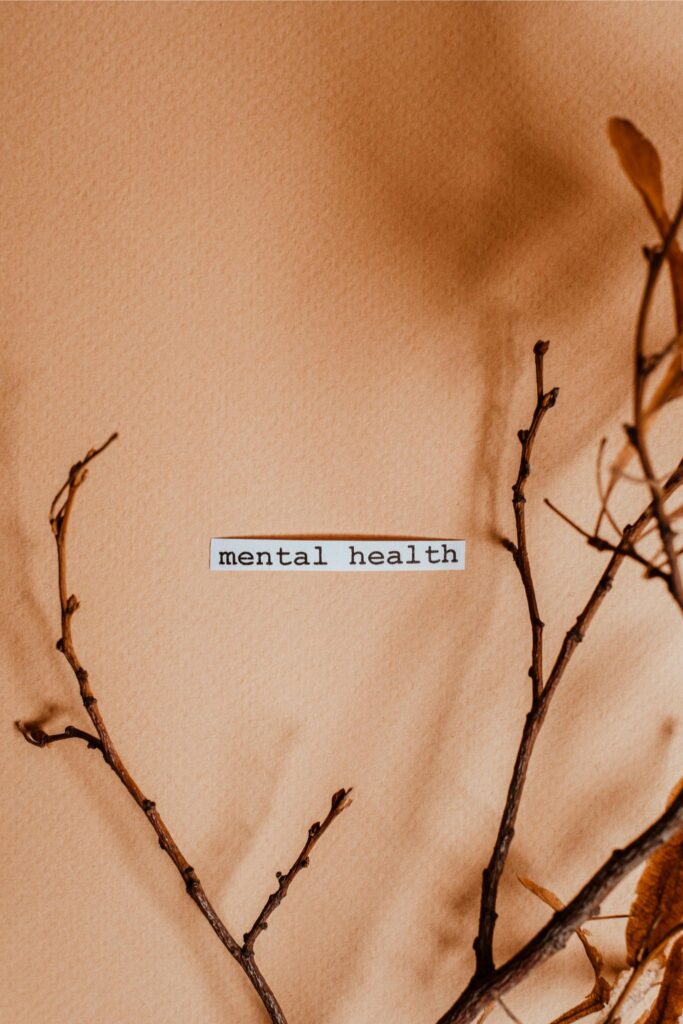Distinguishing Depression from Burnout
As a self-identifying workaholic, burnout is a term I am far too familiar with. I’ve worked myself to the bone before, taking on four different jobs while being a full-time student and being a Research Assistant in a social psychology lab. My schedule has had practically no white space in the past. I’ve been so tired that I can’t even keep my eyes open during class. Burnout is a very real experience that many people deal with in and out of the workplace.
Though burnout has affected my physical, mental, and emotional health, dealing with depression has also impacted my life greatly. Having a disease while also regulating my workload has led to confusion and frustration surrounding identifying my stressors and triggers. Am I not able to get out of bed because of my depression? Or am I doing too much?
Being able to differentiate between depression and burnout is crucial as it can make the difference when discovering what recovery tools to utilize. From differences in causes, to symptom variations, to treatment options, depression and burnout can differ in many ways.

WHAT IS DEPRESSION?
Depression, often referred to as major depressive disorder (MDD), is a mental health condition characterized by persistent feelings of sadness, hopelessness, and a lack of interest or pleasure in daily activities. Its core characteristics include:
- Persistent Sadness
- Loss of Interest
- Fatigue and Low Energy
- Changes in Appetite and Weight
- Sleep Disturbances
- Feelings of Worthlessness or Guilt
- Difficulty Concentrating
- Physical Symptoms
- Thoughts of Death or Suicide
The exact cause of depression is multifactorial and may involve a combination of genetic, biochemical, environmental, and psychological factors. Some potential causes and risk factors include:
- Genetics: A family history of depression can increase one’s risk, suggesting a genetic component.
- Chemical Imbalance: Changes in neurotransmitter levels, such as serotonin, norepinephrine, and dopamine, can play a role in depression.
- Stressful Life Events: Traumatic experiences, loss of a loved one, job loss, or relationship problems can trigger depression.
- Medical Conditions: Certain medical conditions, like chronic illness or chronic pain, can increase vulnerability to depression.
- Substance Abuse: The misuse of drugs or alcohol can contribute to or worsen depressive symptoms.
- Personality Traits: People with low self-esteem, a history of anxiety, or a pessimistic outlook may be more susceptible to depression.
- Gender: Women are more likely to be diagnosed with depression, but men are less likely to seek help, making the prevalence in both genders significant.
Depression is a global health concern, affecting people of all ages, backgrounds, and genders. According to research, “Black and Asian American women experience the highest mental health risks and that interventions for reducing disparities in depressive symptoms should focus on adults in their late 20s/early 30s, particularly women of color.” For women of color, there are unique challenges related to cultural stigma, access to mental health care, and experiences of discrimination that can impact both the prevalence and treatment of depression. Statistically, depression can be more common in WOC due to the compounding effects of racism, sexism, and socioeconomic disparities, which increase stress and reduce access to quality care.

WHAT IS BURNOUT?
Burnout is a state of physical, emotional, and mental exhaustion caused by prolonged exposure to excessive work-related stress. Its core characteristics include:
- Emotional Exhaustion: Individuals with burnout often feel emotionally drained and depleted, making it challenging to cope with stressors or connect with others.
- Reduced Performance: Burnout can result in decreased productivity, impaired decision-making, and difficulty concentrating, leading to a decline in job performance.
- Cynicism and Detachment: People experiencing burnout may develop a sense of detachment from their work, colleagues, and even personal life, often adopting a cynical or negative attitude.
Burnout and chronic stress are closely linked, with chronic stress serving as the primary precursor to burnout. Chronic stress is a prolonged state of heightened stress response, often triggered by work-related demands, job insecurity, long hours, or a hostile work environment. As this stress persists over time, it can lead to burnout. Burnout, in essence, is the endpoint of untreated chronic stress. It’s the result of an extended period during which an individual’s coping mechanisms are overwhelmed, and they reach a state of exhaustion and disengagement.
Several causes and risk factors can contribute to burnout:
- High Workload
- Lack of Control
- Lack of Support
- Work-Life Imbalance
- Unclear Job Expectations
- Personality Factors
The prevalence of burnout is a growing concern in today’s fast-paced and demanding work environments. In terms of Women of Color, several challenges come into play. Women of Color often face intersectional challenges, including the compounding effects of workplace discrimination, racial and gender biases, and socio-economic disparities. The experiences of Women of Color in the workplace can be complex, leading to a higher likelihood of burnout, yet their specific experiences are not always adequately addressed in research and workplace interventions.
Common symptoms of burnout include:
- Persistent fatigue and exhaustion, both physical and emotional.
- Reduced efficiency and productivity.
- Detachment from work and colleagues, leading to cynicism.
- Increased irritability and mood swings.
- Sleep disturbances.
- Physical symptoms like headaches and gastrointestinal issues.
- Neglect of self-care and personal life.

Key Differences Between Depression and Burnout
Despite their unique features, depression and burnout can overlap, leading to confusion. Several factors contribute to this:
- Emotional Strain: Both conditions involve emotional distress, which can be challenging to differentiate. While depression has a broader scope, including sadness and hopelessness in various life areas, burnout is predominantly tied to work-related stress.
- Physical Symptoms: Weight changes, sleep disturbances, and physical complaints can be seen in both depression and burnout. These shared symptoms can make it difficult to pinpoint the specific condition.
- Reduced Performance: Reduced work performance is a shared feature, but in depression, it often extends to all life domains, whereas in burnout, it is primarily confined to the workplace.
- Stress as a Trigger: Chronic stress can lead to both depression and burnout. Understanding the primary stressor (work-related for burnout and a broader range for depression) can help distinguish the two.
Recognizing the Signs and Seeking Help
Recognizing the early signs of depression and burnout is paramount for several reasons. Early identification can:
- Prevent Escalation: Identifying these conditions in their early stages can help prevent them from worsening and becoming more challenging to manage.
- Improved Quality of Life: Early intervention allows individuals to seek help and regain control over their mental well-being, enhancing their overall quality of life.
- Enhance Productivity: For those facing burnout, early recognition and intervention can restore work performance, benefiting both the individual and the organization.
- Prevent Complications: Untreated depression and burnout can lead to more severe mental health issues or physical health complications. Early recognition can mitigate these risks.
Identifying signs and symptoms of depression and burnout is crucial. Here are some key indicators to look for.
- Depression: Persistent sadness, loss of interest, changes in appetite or sleep, feelings of worthlessness, difficulty concentrating, and thoughts of death or suicide.
- Burnout: Emotional exhaustion, reduced performance, cynicism or detachment from work, irritability, physical symptoms like headaches, and neglect of self-care and personal life.
If you suspect that you or someone you know is experiencing depression or burnout, seeking professional help is crucial. Mental health professionals can provide an accurate diagnosis that will ensure proper treatment and a personalized treatment plan that is likely to provide relief. In addition, professionals can provide a safe space to discuss feelings, thoughts, and challenges, as well as support and guidance.
Treatment options for depression and burnout vary but can include:
- Therapy: Cognitive-behavioral therapy (CBT), interpersonal therapy, and mindfulness-based therapy are effective for both conditions. Therapy helps individuals understand and manage their emotions and stress.
- Medication: In some cases, antidepressants may be prescribed for depression. There is no specific medication for burnout, as it is primarily a response to chronic stress, but medication may help manage symptoms of depression often associated with burnout.
- Lifestyle Changes: For both conditions, lifestyle modifications, such as exercise, a healthy diet, and stress-reduction techniques, can play a significant role in recovery.

Recognizing the Signs and Seeking Help
Preventing depression and burnout involves a proactive approach to well-being. Consider these strategies:
- Work-Life Balance: Strive for a healthy work-life balance. Set boundaries, and make time for personal interests and relaxation.
- Stress Management: Develop effective stress management techniques, such as mindfulness, meditation, or deep breathing exercises.
- Healthy Relationships: Cultivate supportive relationships both at work and in your personal life. Social connections can act as a protective buffer against stress.
- Time Management: Prioritize tasks and set achievable goals to reduce stress from feeling overwhelmed.
- Physical Activity: Regular exercise is a powerful stress reliever. Aim for at least 30 minutes of physical activity most days.
- Mindfulness: Practicing mindfulness and relaxation techniques can help you stay in the present moment and reduce anxiety.
- Talk to Friends and Family: Open up to loved ones about your feelings. Sharing your thoughts and concerns can provide emotional relief.
- Seek Professional Help: Don’t hesitate to consult a mental health professional when needed. They can provide guidance and treatment options.
- Peer Support: Joining support groups or seeking out peers who have experienced similar challenges can provide valuable insight and comfort.
Self-care is also fundamental for maintaining mental well-being. Practice self compassion and be kind to yourself and your body. Avoid self criticism and ensure you are eating a balanced diet rich in fruits and veggies. Prioritize sleep as well.
Staying resilient in the face of such difficult issues can be so hard. As someone who has dealt with both, I can firsthand say that in the end, after seeking support and getting a proper treatment plan, everything will end up exactly the way you should. Seeking professional help or support from family and friends is crucial to defeating depression and burnout. If you or a loved one is struggling, I encourage you to seek support and take charge of your mental health.

